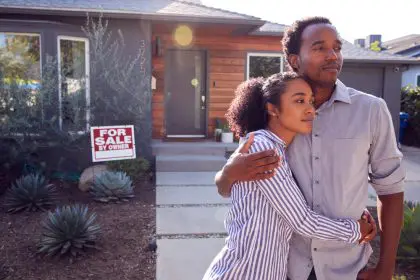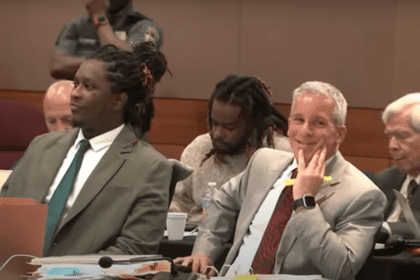Charlotte, North Carolina’s largest city, pulses with modern energy, its skyline a testament to growth. Yet, beneath the gleam of progress, three neighborhoods — Biddleville, Cherry, and Brooklyn — carry echoes of a harder past. These corners, each distinct in character, share a history marked by systemic challenges, displacement, and resilience. From policies that reshaped communities to struggles that tested their spirit, the legacy of these areas lingers, influencing daily life and local identity. This exploration, numbering each neighborhood for clarity, traces their stories and the enduring strength found within.
1. Biddleville: A village weighed by change
Biddleville, nestled west of Uptown, hums with a village-like charm. Narrow lanes and modest homes, many predating World War II, cluster around Johnson C. Smith University, a beacon of Black education since the 1860s. Yet, this neighborhood’s roots in Reconstruction-era promise have been tested by decades of strain. Once a mixed community, it became predominantly Black as segregation tightened its grip in the early 20th century, isolating it from broader city resources.
The past left marks. Policies like redlining starved the area of investment, limiting homeownership and business growth. By the 1970s, economic shifts drained jobs, and crime crept in, fraying the social fabric. Homes fell into disrepair as taxes rose, and some lots sat empty, relics of a cocaine epidemic that hit hard in the 1980s. Today, new pressures loom — rising property values threaten to push out long-time families, as wealthier newcomers eye the area’s proximity to downtown.
Still, Biddleville endures. Community groups rally to preserve its character, organizing cleanups and festivals that celebrate its heritage. Churches and small businesses, from barbershops to soul food spots, remain anchors, fostering pride. The neighborhood’s story is one of holding fast, its people weaving new chapters while honoring old ones.
2. Cherry: A fading legacy fights to stay
Cherry, just southeast of Myers Park, began in 1891 as a haven for Black workers — farmhands, railmen, and domestics —seeking homes beyond crowded city wards. Its streets, lined with simple cottages, buzzed with life, from church picnics to porch gatherings. But the neighborhood’s early promise faced relentless challenges. Segregation confined its growth, and by the mid-20th century, absentee landlords neglected properties, letting homes crumble while charging steep rents.
The 1960s brought a deeper blow. Urban renewal plans targeted Cherry for upscale development, deeming it too valuable for low-income housing. Bulldozers loomed, and though community organizers fought back, securing funds to rehab homes, the tide shifted. Over decades, vacant lots were snapped up for condos and offices, eroding the neighborhood’s core. By 2015, its Black population had dwindled, replaced by wealthier residents drawn to its location near Uptown.
Cherry’s spirit clings on, though. A community center, built on land donated by its founders, hosts youth programs and voter drives. Parks and churches still draw families, and murals nod to the past. The neighborhood stands at a crossroads, balancing its history with a future that feels less certain, yet its residents remain steadfast, guarding what remains.
3. Brooklyn: A lost heart mourned
Brooklyn, once the vibrant soul of Charlotte’s Second Ward, is now a ghost in the city’s memory. In its heyday, from the late 1800s to the 1950s, it thrived as a Black hub. Corner stores, theaters, and churches lined its streets, serving families from laborers to professionals. It was a place of self-reliance, born from necessity as Jim Crow laws barred access to White-owned businesses elsewhere.
But Brooklyn’s light was dimmed by design. In the 1960s, urban renewal labeled it a slum, ignoring its vitality. Highways and government buildings replaced homes and shops, scattering over a thousand families. Freeways like Independence Boulevard carved through, leaving little trace of what was. Today, the area holds sterile offices and parking lots, with only a park and a few plaques hinting at its past.
The loss still stings. Some former residents, now in Biddleville or Cherry, pass down stories of Brooklyn’s markets and music, keeping its memory alive. Community archives preserve photos and maps, piecing together what was erased. Though gone, Brooklyn’s legacy fuels efforts to protect other neighborhoods, a reminder of what’s at stake when history is bulldozed.
Forces that shaped the pain
The struggles of these three neighborhoods didn’t arise in isolation. Segregation, cemented by law and custom, boxed Black communities into underfunded corners, limiting schools, parks, and jobs. Redlining, a federal policy, flagged these areas as risky, choking off loans for homes or businesses. By the 1930s, maps coded Biddleville, Cherry, and Brooklyn in red, signaling banks to turn away.
Urban renewal struck next. Starting in the 1950s, Charlotte chased a modern image, razing areas deemed undesirable. While pitched as progress, these projects often targeted Black neighborhoods, prioritizing highways and offices over homes. In Brooklyn, the toll was total; in Cherry and Biddleville, the threat lingered, fraying community ties. Economic shifts added pressure — factories closed, and jobs moved to suburbs, leaving gaps that crime and neglect filled.
Recent decades bring new challenges. Gentrification, fueled by Charlotte’s boom, lifts property values but risks displacement. Developers eye these neighborhoods’ prime locations, and rising taxes strain families rooted for generations. The past’s shadow — inequity, erasure — meets the present’s push for profit, testing each area’s resolve.
Resilience rises
Despite the weight, these neighborhoods pulse with defiance. In Biddleville, block parties and university partnerships spark connection, while gardeners reclaim vacant lots for vegetables and flowers. Cherry’s residents lean on their community center, hosting job fairs and art classes to bridge old and new. Brooklyn’s memory lives in advocacy — groups push for affordable housing citywide, learning from its fate.
Local efforts grow. Nonprofits fund home repairs, easing tax burdens for seniors. Churches open food pantries, and youth programs steer kids toward college or trades. City plans, though slow, add sidewalks and lights, signs of investment long overdue. These steps, small against a heavy history, show a refusal to fade, a commitment to shape what’s next.
A future unwritten
Charlotte’s Biddleville, Cherry, and Brooklyn carry their past like a quiet ache, but they’re not defined by it. Each neighborhood, though scarred, stands firm — Biddleville’s village heart, Cherry’s stubborn roots, Brooklyn’s lingering lessons. The challenges— segregation’s legacy, renewal’s wreckage, gentrification’s creep — persist, but so does the drive to overcome.
New chapters unfold. Community gardens bloom, and festivals draw crowds, blending old stories with fresh faces. The city, now reckoning with its gaps, eyes these areas for growth, but residents demand a voice, ensuring progress doesn’t erase identity. Charlotte’s history, sad as it lingers, fuels a fight for a future where these corners thrive, their strength a beacon for all.













